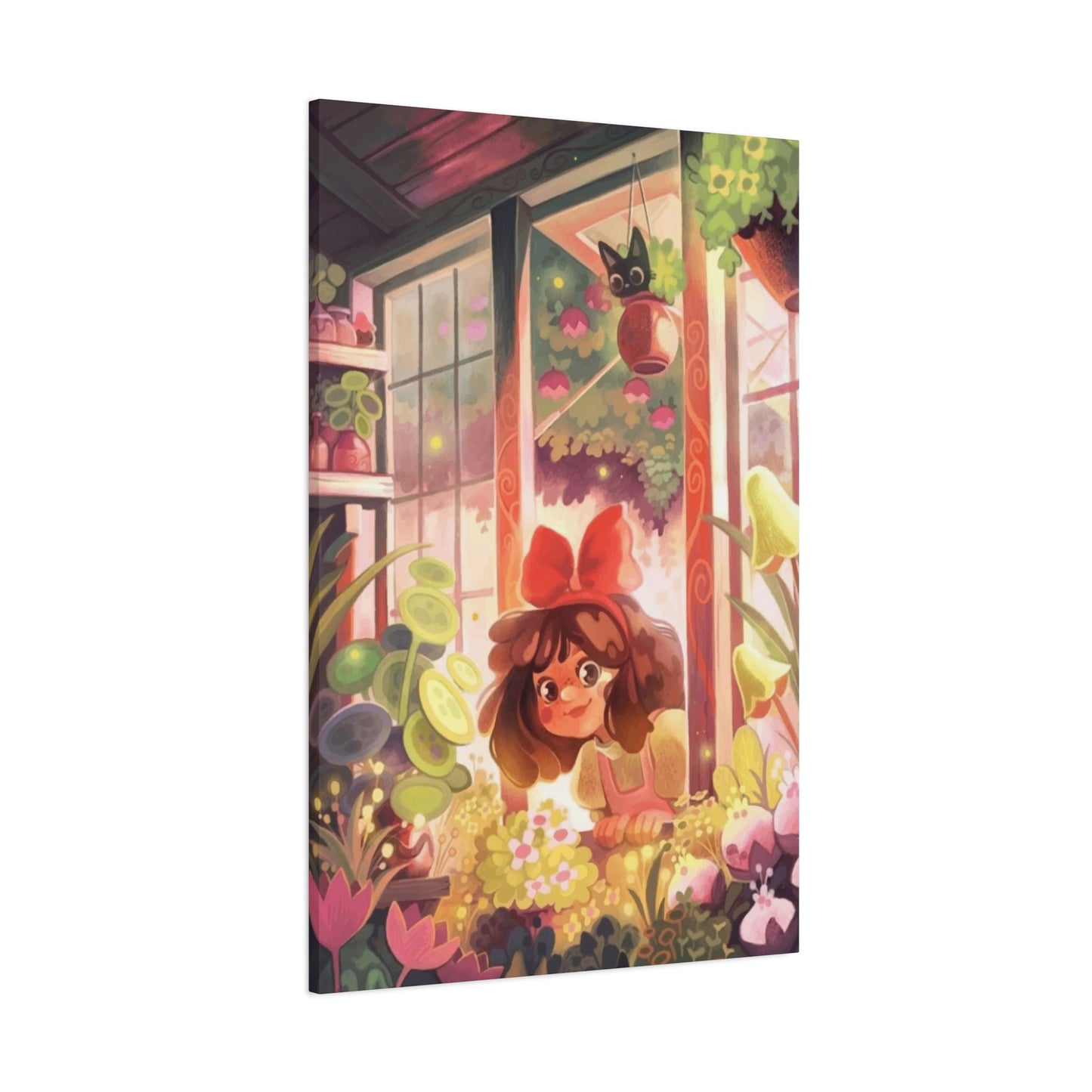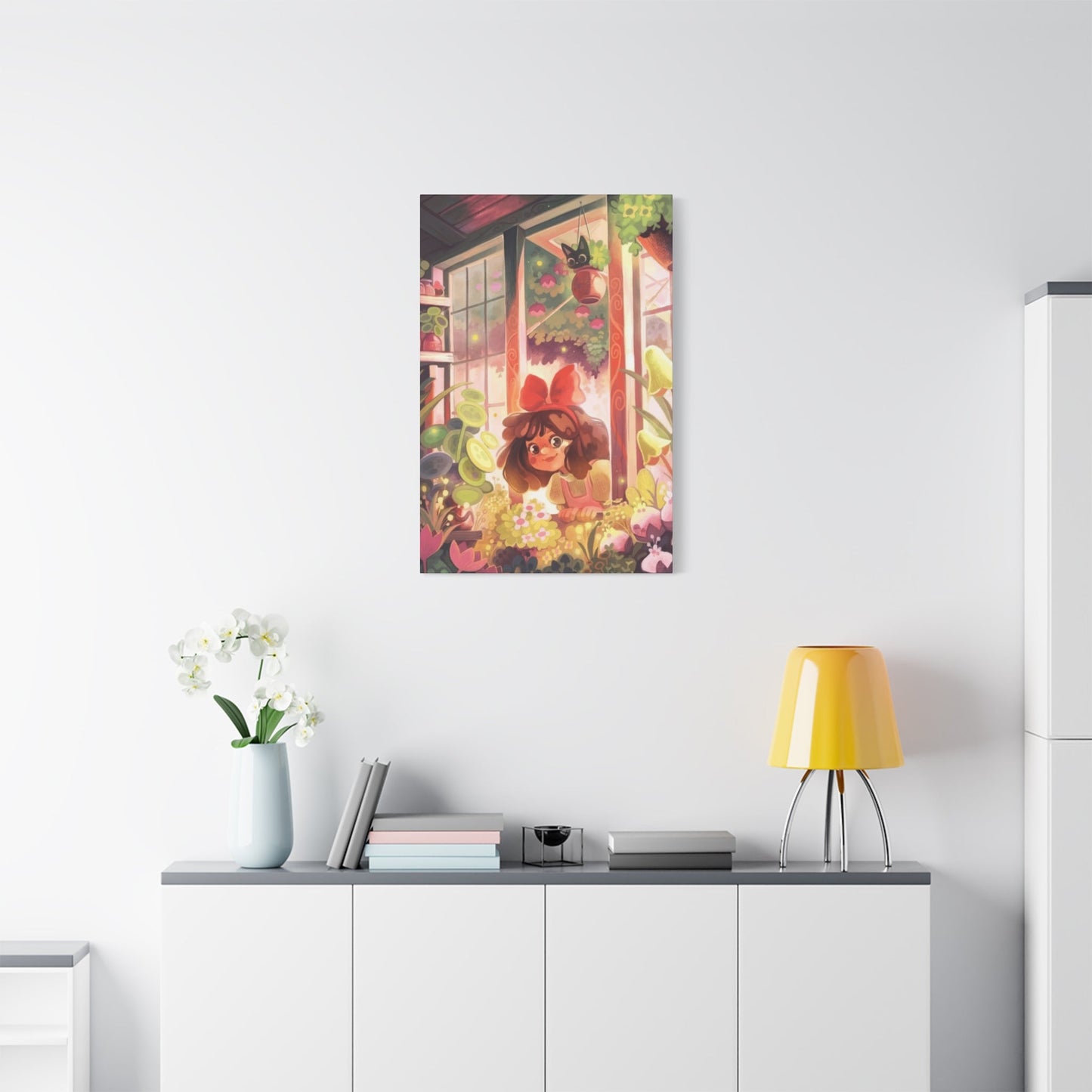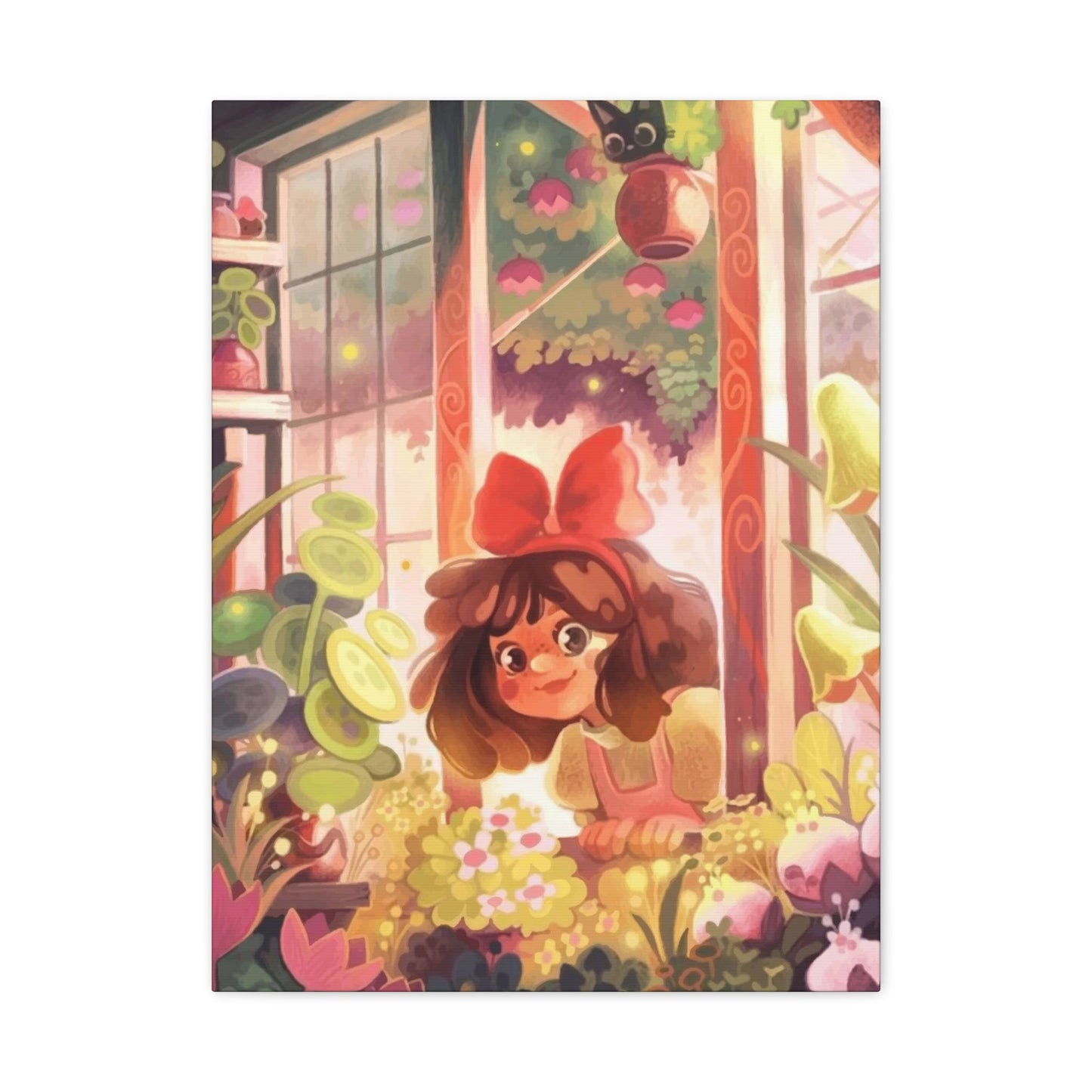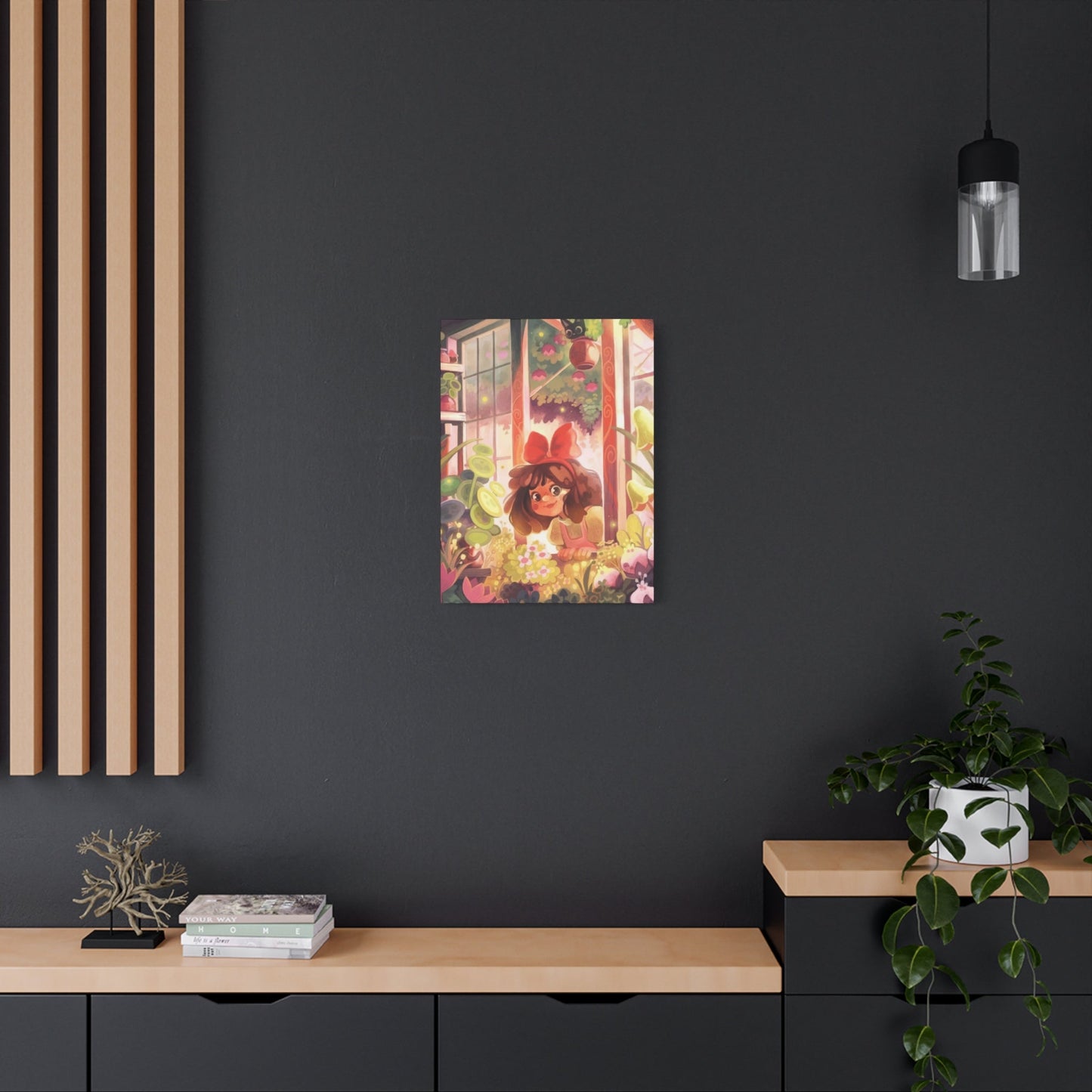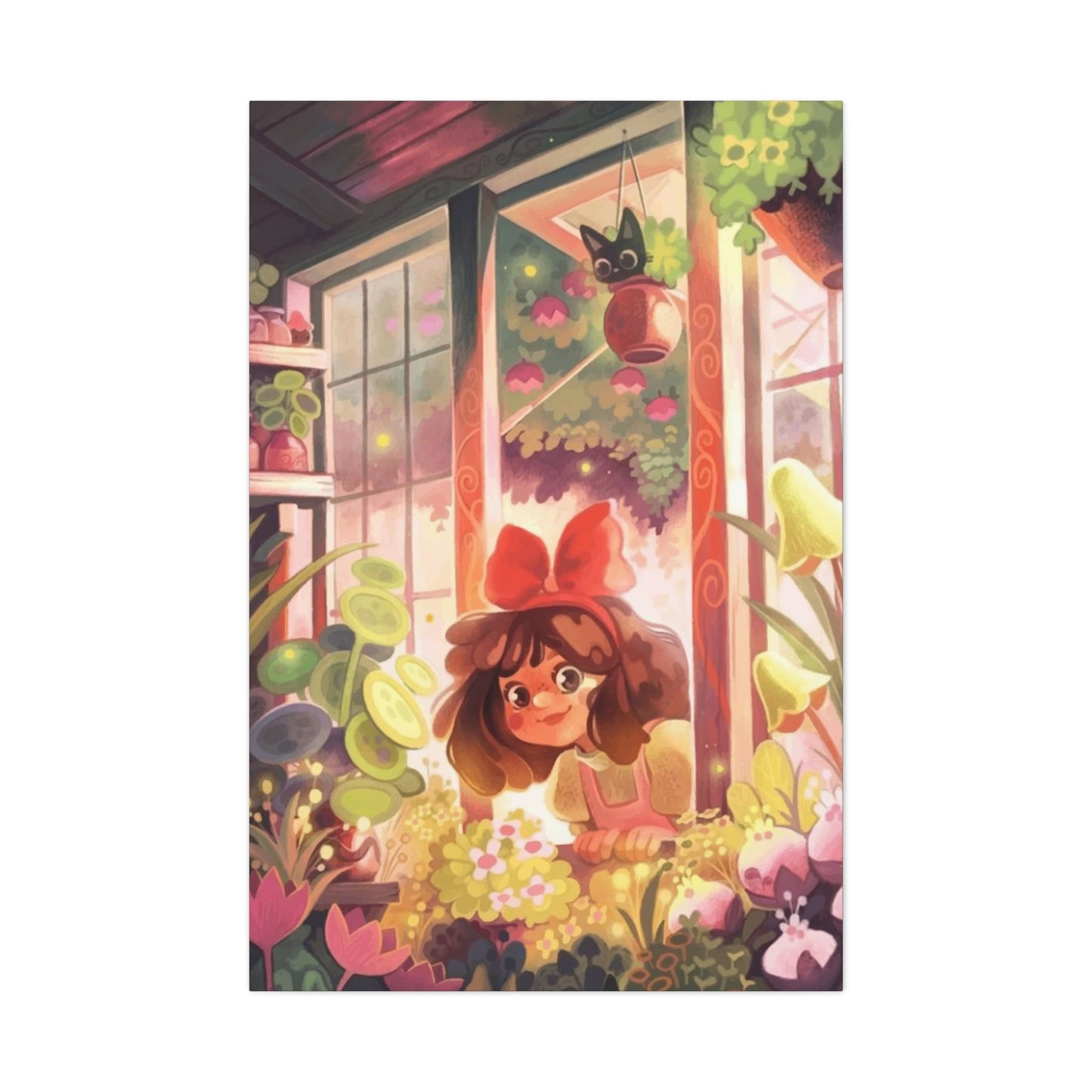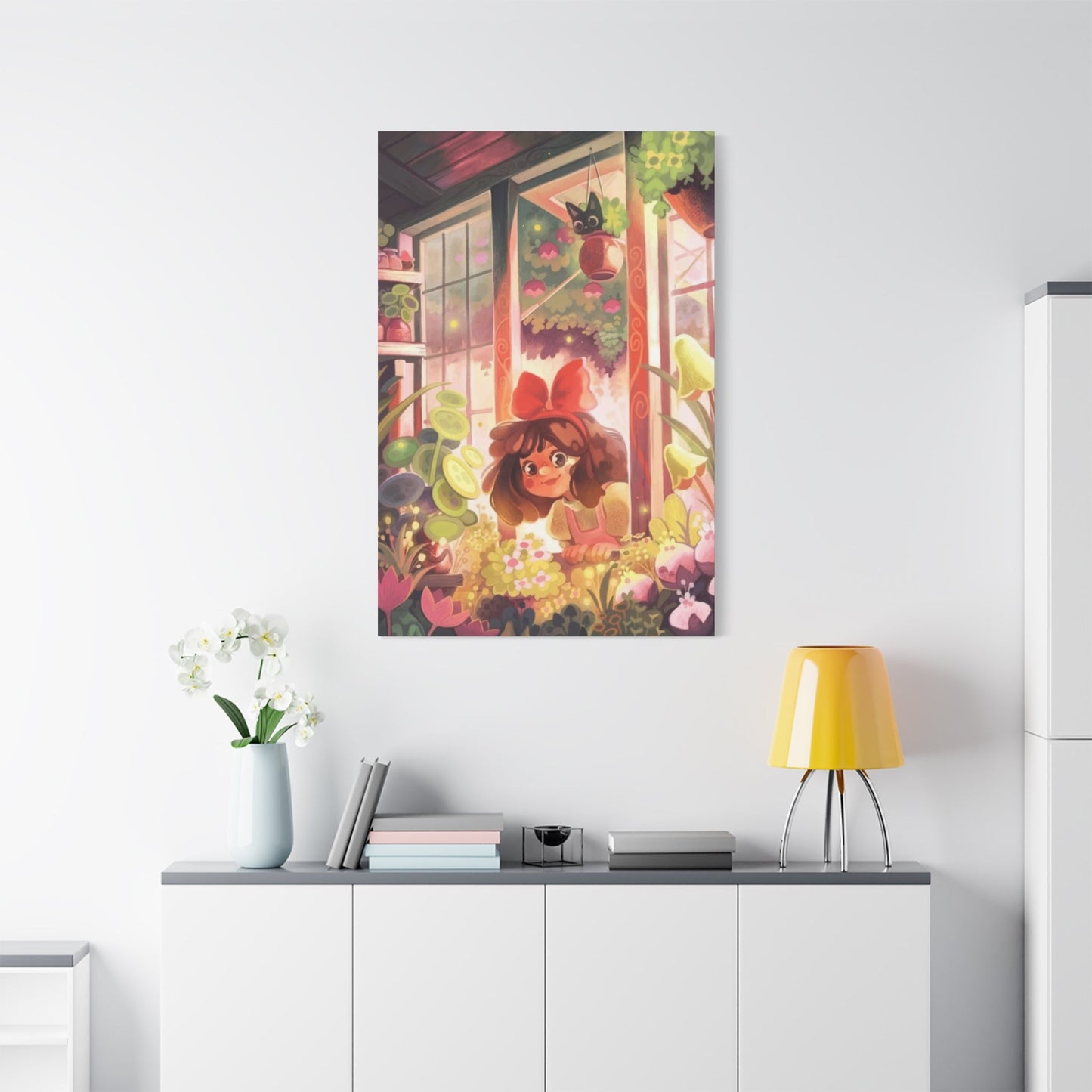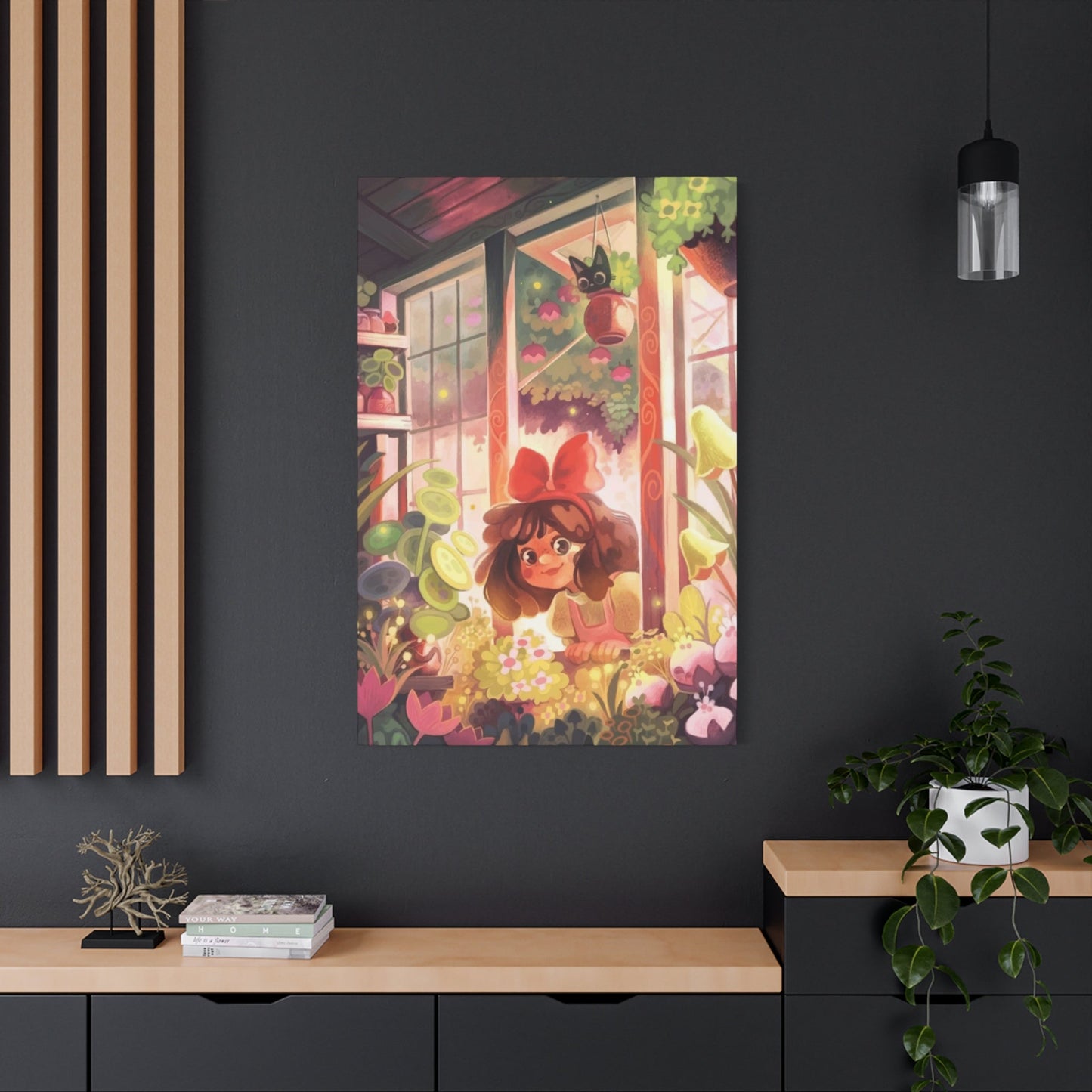Window Girl Wall Art: Capturing Feminine Mystique Through Glass and Light
The image of a young woman gazing through a window has become one of the most compelling and enduring motifs in contemporary artistic expression. This powerful visual narrative transcends mere decoration, serving as a profound commentary on the human condition, feminine consciousness, and the boundaries between public and private realms. Throughout the evolution of modern art, this particular theme has maintained its relevance, speaking to audiences across cultural and temporal divides with remarkable consistency. Modern artists have embraced this motif as a vehicle for exploring complex psychological states and social dynamics. The window serves as a liminal boundary, a threshold between the known comfort of domestic environments and the uncertain expanse of the external world.
When a feminine figure occupies this transitional zone, the composition automatically invites contemplation about agency, desire, confinement, and liberation. Contemporary creators working across various mediums have recognized the symbolic potency of this arrangement, utilizing it to communicate narratives that resonate with viewers on multiple levels. The proliferation of this imagery in galleries, online platforms, and residential settings speaks to its universal appeal. Unlike more abstract or conceptual works that may alienate certain audiences, the window girl composition offers immediate visual accessibility while simultaneously providing layers of meaning for those who choose to engage more deeply.
This dual nature makes it particularly effective in both commercial and fine art contexts, allowing it to bridge the gap between popular culture and serious artistic discourse. In examining why this particular symbol has gained such prominence in modern art, we must consider the changing role of women in society and how visual culture reflects and shapes these transformations. The figure at the window can represent countless narratives: a young woman contemplating her future, someone experiencing loneliness in an increasingly connected world, a person caught between tradition and modernity, or simply someone finding a moment of peace in a chaotic existence. The ambiguity inherent in the composition allows each viewer to project their own experiences and interpretations onto the scene.
The technical aspects of creating such imagery also contribute to its popularity among artists. The window provides a natural frame within the frame, creating geometric interest and guiding the viewer's attention toward the central figure. The interplay of light filtering through glass offers endless opportunities for dramatic lighting effects, soft diffusion, and the creation of atmospheric mood. These elements combine to produce visually striking compositions that demonstrate technical proficiency while conveying emotional depth. Furthermore, the window girl motif has proven remarkably adaptable to various artistic movements and styles. Minimalist interpretations might feature stark silhouettes against bright backgrounds, while more detailed approaches could incorporate intricate patterns from curtains, reflections in the glass, or elaborate architectural elements.
This versatility ensures that the theme remains fresh and relevant, capable of speaking to each new generation of artists and audiences in ways that feel contemporary rather than derivative. The digital age has amplified the reach and impact of this imagery, with social media platforms facilitating the rapid dissemination of window girl compositions. Photographers, illustrators, and painters share their interpretations globally, creating a conversation that spans continents and cultures. This exchange has revealed both the universal aspects of the motif and the ways in which different cultural contexts inflect its meaning. What might signify longing in one tradition could represent meditation or spiritual contemplation in another, demonstrating the rich complexity of this seemingly simple visual arrangement.
Capturing Solitude: The Window Girl Motif
Solitude has become an increasingly precious commodity in our hyperconnected world, and the window girl motif captures this modern yearning with remarkable precision. The composition inherently suggests a withdrawal from the demands of social interaction, presenting a figure who has chosen or been compelled to occupy a space of separation. This separation, however, is permeable rather than absolute. The window allows visual connection to the outside world while maintaining physical and psychological distance, creating a state of engaged isolation that resonates deeply with contemporary experiences. The artistic representation of solitude through this motif differs significantly from depictions of loneliness or abandonment.
There is typically an intentionality suggested by the figure's posture and placement, a sense that this moment of separation serves a purpose beyond mere circumstance. Whether the subject appears to be daydreaming, reading, observing, or simply existing in stillness, the composition communicates that solitude can be a chosen state rather than an imposed condition. This distinction matters greatly in how audiences receive and interpret the work, transforming potential melancholy into contemplative beauty. Photographers and painters approaching this theme must make careful decisions about how to convey the quality of solitude they wish to express. The angle of the figure's gaze, the set of her shoulders, the presence or absence of additional elements within the frame all contribute to the overall emotional tenor of the piece.
A subject looking directly out the window suggests active engagement with the external world and perhaps a desire to join it. Conversely, a figure gazing downward or with eyes closed implies a more inward-focused solitude, a retreat into personal thought and feeling that uses the window merely as a backdrop rather than a point of connection. The treatment of light becomes crucial in capturing the essence of solitude within this framework. Soft, diffused illumination can create a dreamlike atmosphere that emphasizes the psychological distance between subject and surroundings. Harsh, direct light might highlight the physical barrier of the glass, making viewers more conscious of the separation between interior and exterior realms.
Many artists favor the transitional lighting of dawn or dusk, when the quality of natural light itself seems suspended between states, mirroring the liminal quality of the solitary figure's position. The choice of setting also profoundly influences how solitude registers within the composition. A figure at a window in a clearly urban environment, with visible buildings and streets beyond, creates a different narrative than one positioned against a natural landscape. The urban setting might emphasize themes of isolation within crowds, the paradox of feeling alone while surrounded by millions. A rural or natural backdrop could instead suggest intentional retreat, a purposeful seeking of solitude as respite from societal demands.
Both approaches validate different forms of aloneness, acknowledging the varied ways humans experience and require separation from others. Contemporary artists working with this motif often incorporate subtle details that enrich the portrayal of solitude without overwhelming its essential simplicity. A book resting on a nearby surface, a cup of tea, a plant on the windowsill, these elements suggest a life being lived in this solitary space, distinguishing chosen solitude from enforced isolation. The presence of such objects implies agency and comfort, reassuring viewers that the figure's separation serves a purpose and provides sustenance rather than draining vitality. The psychological complexity of solitude finds perfect expression through the window girl composition because it acknowledges the dual nature of separation.
The figure is simultaneously protected and confined, connected and isolated, present and distant. This multiplicity of states mirrors the actual experience of productive solitude, which often involves a complex interplay of emotions and sensations rather than a simple, unified feeling. Artists who successfully capture this complexity create works that invite prolonged contemplation, rewarding viewers who return to the piece repeatedly with new insights and resonances. The cultural moment we inhabit, marked by constant connectivity and diminishing privacy, has elevated the value of solitude in the collective imagination. The window girl motif taps into this cultural shift, offering viewers a visual representation of something they increasingly crave but rarely achieve.
Window Girl Photography Ideas
Creating compelling window girl photography requires careful attention to numerous elements that combine to produce a cohesive and emotionally resonant image. The genre offers endless creative possibilities while maintaining recognizable core characteristics that make such photographs immediately identifiable. Photographers interested in exploring this theme can approach it from countless angles, each offering unique opportunities for personal expression and technical experimentation. One fundamental consideration involves the selection of the window itself. Not all windows serve the story equally well. Large, floor-to-ceiling windows create dramatically different compositions than small, intimate casement windows.
The former might emphasize the figure's relationship to vast exterior spaces, creating a sense of scale that can make the subject appear small and vulnerable or conversely, contemplative and serene within an expansive world. Smaller windows create more enclosed, intimate atmospheres, focusing attention more tightly on the figure herself and her immediate emotional state rather than her relationship to the broader environment. The architectural style and condition of the window frame contribute significantly to the overall aesthetic and narrative. Weathered, peeling paint on old wooden frames can evoke nostalgia, decay, or romantic notions of the past. Clean, modern frames with minimal visible structure emphasize the transparency of the barrier between interior and exterior, sometimes nearly disappearing from conscious perception and allowing the view beyond to merge more seamlessly with the figure's environment.
Ornate, decorative frames might suggest wealth, tradition, or a connection to historical periods, adding layers of social commentary to the composition. Timing the photograph to coincide with optimal lighting conditions can transform an ordinary setup into something extraordinary. The golden hour, that period shortly after sunrise or before sunset when light takes on a warm, honeyed quality, remains a favorite among photographers for good reason. This light flatters skin tones, creates long, dramatic shadows, and imbues the entire scene with an ethereal quality that enhances the dreamlike aspects often associated with this motif. However, the harsh light of midday, typically avoided in portrait photography, can be used intentionally to create stark, high-contrast images that emphasize themes of exposure, clarity, or unforgiving reality.
The model's positioning relative to the window deserves careful choreography. Placing the figure directly in front of the window, backlit by exterior light, creates a silhouette effect that emphasizes form over detail, transforming the subject into a more universal symbol than a specific individual. This approach works particularly well when the goal is to create imagery that allows viewers to project themselves into the scene. Alternatively, positioning the subject to one side, with light raking across her features, reveals texture and detail while maintaining the presence of the window as a key compositional element. The model might sit on the windowsill, stand beside it, press against the glass, or remain at a distance, each choice communicating different relationships to the threshold the window represents.
Props and styling elements require thoughtful selection to enhance rather than distract from the core composition. Clothing choices significantly impact the overall mood, with flowing fabrics creating a sense of movement and romanticism, while more structured garments might suggest formality or constraint. The color palette should harmonize with the lighting and the tones visible through the window. A subject wearing colors that contrast with the exterior view will stand out more distinctly, while analogous colors create a more integrated, cohesive feel. Cultural and period-specific clothing can place the image in particular historical or social contexts, adding narrative dimensions beyond the immediate visual impact. The decision regarding what appears beyond the window merits careful consideration.
Urban landscapes with visible architecture and human activity create very different narratives than natural settings with trees, sky, and organic forms. Some photographers prefer deliberately obscured or out-of-focus exteriors that suggest the outside world without defining it precisely, allowing the blur to represent possibility, uncertainty, or the subject's internal focus rather than external reality. Weather conditions visible through the glass rain, snow, fog, brilliant sunshine communicate additional emotional information and can be coordinated with the subject's expression and posture to reinforce the intended mood. Technical execution plays a vital role in realizing the creative vision.
The choice of aperture affects depth of field, determining whether both the subject and the view beyond remain sharp or whether one element drifts into soft focus. Wide apertures that create shallow depth of field can isolate the figure from her surroundings, emphasizing her separation, while deeper focus that keeps multiple planes sharp might suggest a more integrated relationship between the woman and her environment. Shutter speed considerations become important when incorporating motion, whether that's falling rain, blowing curtains, or slight movements from the model herself that can add life and energy to what might otherwise feel static. Post-processing decisions significantly influence the final impact of window girl photography.
Color grading can shift the emotional tenor dramatically, with warm tones suggesting comfort, nostalgia, or romantic longing, while cooler tones might emphasize distance, sadness, or contemporary aesthetics. The degree of contrast affects how viewers perceive the relationship between light and shadow, softness and definition. Some photographers embrace heavy editing that pushes images toward painterly or illustrative qualities, while others prefer minimal intervention that preserves the documentary feel of the captured moment. Neither approach is inherently superior, both serve different artistic intentions and appeal to different audiences.
Emotional Depth in Window Girl Paintings
Painting offers unique opportunities for conveying emotional depth within the window girl motif, allowing artists to manipulate every element of the composition with intention and precision impossible in photographic mediums. The painter's hand mediates between subject and viewer, imbuing the work with personal interpretation and emotional inflection that becomes inseparable from the image itself. This mediation enables a level of psychological penetration and symbolic density that distinguishes painted works from their photographic counterparts. The painter's choice of medium fundamentally shapes how emotional content manifests in the finished work. Oil paint, with its rich colors and capacity for blending, creates luminous surfaces that can evoke Old Master techniques, connecting contemporary window girl paintings to centuries of artistic tradition.
The slow drying time of oils allows for extended working periods, enabling subtle gradations of tone and color that build atmospheric depth. Watercolor, conversely, with its transparency and tendency toward spontaneity, can capture fleeting emotional states and ephemeral qualities of light with a freshness that feels immediate and uncontrived. Acrylic paint offers versatility, capable of being manipulated to resemble either oil or watercolor while providing unique textural possibilities of its own. The handling of paint itself becomes a vehicle for emotional expression. Loose, gestural brushwork can convey turbulent inner states or the energy of barely contained feeling, while tight, controlled application might suggest psychological restraint, careful containment of emotion, or the precision of observed detail.
Many painters working with this motif employ varied techniques within a single piece, perhaps rendering the figure with careful attention while treating the surrounding environment more abstractly, thus directing viewer attention and suggesting the subject's perceptual focus or emotional priorities. Color theory provides painters with powerful tools for emotional communication. The palette chosen for a window girl painting immediately establishes mood and psychological atmosphere. Cool, desaturated colors can evoke melancholy, distance, or contemplative calm, while warmer, more saturated hues suggest passion, vitality, or emotional intensity. Unexpected color choices that depart from naturalistic representation can signal that the painting operates in a heightened emotional register, inviting viewers to engage with the work as psychological rather than purely observational.
The relationship between the colors used for the figure and those describing the view beyond the window can reinforce or create tension with the narrative suggested by the composition. The degree of realism versus abstraction significantly impacts emotional reception. Highly realistic paintings that capture minute details of facial expression, fabric texture, and light quality can create powerful emotional connection through recognizable humanity, allowing viewers to read subtle emotional cues in the figure's features and posture. More abstracted approaches that simplify or distort form can paradoxically create even stronger emotional resonance by eliminating distracting details and reducing the image to essential emotional components.
The figure might be suggested through minimal marks or geometric shapes, becoming an evocative rather than descriptive presence that invites projection and interpretation. The treatment of the figure's face particularly the eyes, often called windows to the soul, becomes crucial in paintings exploring emotional depth. Some artists choose to obscure or turn away the face entirely, creating mystery and universality while perhaps suggesting emotional states characterized by withdrawal, shame, or the desire for privacy. Others render facial features with exquisite detail, capturing micro-expressions that reveal complex, sometimes contradictory emotions. The direction and quality of the gaze, when visible, communicates volumes about the figure's inner state and relationship to what lies beyond the glass barrier. Scale considerations affect emotional impact in significant ways.
A small, intimate painting invites close inspection and creates a sense of privacy between artwork and viewer, as if being allowed access to a personal moment. Large-scale works command physical presence and can overwhelm viewers, immersing them in the emotional atmosphere of the painting. The size of the figure relative to the canvas also matters, a small figure within a large frame emphasizing isolation or the vastness of the world, while a figure that nearly fills the picture plane creates intimacy and psychological intensity. Symbolic elements integrated into the painted composition can layer additional emotional meaning onto the core motif. The inclusion of wilting flowers might suggest decay, passing time, or fading beauty.
Birds, whether caged or flying freely beyond the window, can symbolize confinement or liberation. Books, musical instruments, or other objects associated with specific activities hint at the figure's identity and interior life, providing context that shapes emotional interpretation. The most effective use of such symbols feels organic rather than heavy-handed, emerging naturally from the scene rather than being imposed upon it. Historical painting techniques and references can add emotional resonance through connection to artistic lineage. A window girl painting executed in a style reminiscent of Vermeer or other Dutch Masters invokes associations with that period's exploration of domestic interiors and feminine experience. References to Romantic or Pre-Raphaelite traditions connect the work to movements that privileged emotion, imagination, and idealized femininity.
The Mystery of the Girl at the Window
Mystery constitutes one of the most compelling aspects of window girl imagery, creating magnetic pull that draws viewers into sustained engagement with the work. This mystery operates on multiple levels, involving the subject's identity, her thoughts and feelings, her circumstances, and her relationship to the threshold she occupies. Unlike narrative artworks that provide clear storytelling, the window girl composition typically offers only fragments of information, requiring viewers to construct their own interpretations from limited visual evidence. The inherent ambiguity of the motif resists definitive interpretation, a quality that enhances rather than diminishes its power. We see a figure at a window, but we cannot know with certainty what she thinks or feels, where she is, why she occupies this particular position at this particular moment.
The image provides no answers, only tantalizing suggestions that stimulate imagination and invite speculation. This openness transforms viewers from passive observers into active participants, each bringing their own experiences and assumptions to the interpretive process. The obscuring or partial revelation of the figure's face amplifies mystery significantly. When we cannot see facial expressions clearly, we lose access to one of the primary means by which we typically read emotion and intention. A figure shown in profile or from behind becomes more enigmatic, forcing us to interpret emotional state from posture, gesture, and environmental cues rather than facial features. Some artists deliberately position subjects in shadow or use hair to obscure features, creating a sense that something important is being withheld or protected from view. This withholding can frustrate our desire for information while simultaneously increasing our investment in attempting to penetrate the mystery.
The window itself functions as both a revealing and concealing element, adding to the overall sense of mystery. We can see through it, suggesting transparency and access, yet it remains a barrier that separates us from both the figure and the world beyond. Reflections in the glass can layer multiple realities into a single visual plane, creating uncertainty about what exists in the room, what lies outside, and how these realms interact. Condensation, rain, or intentional opacity in the glass further obscures clarity, making the already ambiguous composition even more resistant to simple interpretation. The temporal ambiguity of the motif contributes to its mysterious quality. We see a single frozen moment, but we cannot know what preceded it or what will follow. Has the figure just arrived at this spot, or has she been standing here for hours? Is this a habitual position she occupies regularly, or a unique occurrence?
Will she remain here, or is she about to turn away? This temporal uncertainty prevents narrative closure, keeping the image suspended in a perpetual present that invites endless speculation about past and future while remaining eternally elusive. Cultural and historical contexts that remain unspecified within many window girl compositions add additional layers of mystery. The viewer may be unable to determine when or where the scene takes place, whether it represents a contemporary moment or a historical period, whether it occurs in a specific geographical location or exists in a more universal, timeless setting. This temporal and spatial ambiguity allows the image to resist fixed interpretation, remaining open to multiple readings and maintaining relevance across different contexts and time periods.
The psychological depth suggested but not fully revealed in window girl imagery creates perhaps the most profound aspect of its mystery. We sense that the figure possesses rich inner life, complex thoughts and feelings, personal history and dreams, yet we can access only the external manifestation of this interior world. The gap between what we can observe and what remains hidden mirrors our experience of encountering other people in daily life, we can never fully know another person's subjective experience. This acknowledgment of fundamental unknowability can be both unsettling and strangely comforting, validating the mystery of human consciousness while creating visual metaphors for the boundaries between self and other.
The mystery inherent in window girl imagery also relates to broader questions about the nature of femininity and how women have been represented in visual culture. The history of art is replete with images of women observed by predominantly male artists and audiences, often reduced to objects of contemplation rather than recognized as subjects with agency and interiority. The window girl motif can either perpetuate this objectification or subvert it, depending on how the artist approaches the subject. When executed with sensitivity and complexity, such images honor rather than exploit mystery, suggesting depths that deserve respect rather than territories to be conquered through interpretation.
Framed by Light: Window Girl Aesthetics
Light serves as the primary protagonist in window girl aesthetics, functioning as both illumination and subject, technical challenge and expressive medium. The interplay between natural light filtering through glass and the figure positioned to receive it creates the fundamental visual dynamic that defines this genre. Understanding how light behaves in these configurations and how artists manipulate it to achieve specific effects is essential to appreciating the aesthetic sophistication of successful window girl imagery. The directional quality of light streaming through a window creates dramatic modeling on the figure, revealing form through the interplay of highlight and shadow. Unlike the soft, even illumination of overcast days or artificial lighting that wraps around subjects from multiple angles, window light tends to be strongly directional, coming primarily from one side.
This creates a phenomenon known as chiaroscuro, the strong contrast between light and dark that has been exploited by artists since the Renaissance to create dramatic, three-dimensional effects on two-dimensional surfaces. The gradation from bright highlight through midtones to deep shadow can describe the volume and curves of the figure with sculptural clarity. The quality of light, whether hard or soft, profoundly affects the aesthetic character of window girl imagery. Hard light, produced when sunlight streams directly through clear glass unobstructed by clouds or diffusing materials, creates sharp-edged shadows and high contrast. This can produce graphic, dramatic imagery with bold visual impact, though it can also be less flattering to skin tones and facial features, revealing every texture and imperfection.
Soft light, diffused by clouds, sheer curtains, or frosted glass, creates gradual transitions between light and shadow, wrapping around forms more gently and producing a more romantic, ethereal aesthetic that has become particularly associated with this motif. The color temperature of light shifts throughout the day, and artists working with window girl themes can harness these shifts to create varied emotional atmospheres. Morning light tends toward cooler, bluer tones, suggesting freshness, new beginnings, and perhaps a certain emotional distance or clarity. Evening light grows warmer, taking on golden and orange hues that evoke nostalgia, romance, and the approach of darkness.
Midday light, when the sun reaches its highest point, appears most neutral but can also be harshest, creating the strongest contrasts and potentially washing out subtle tonal variations. Sophisticated artists develop sensitivity to these temporal variations and choose shooting or painting times that align with their aesthetic and emotional intentions. The phenomenon of backlighting, where the primary light source comes from behind the subject, creates particularly striking effects within the window girl aesthetic. When executed skillfully, backlighting can produce luminous halos around the figure, make translucent materials like hair or light fabric glow with inner radiance, and create compelling silhouettes that emphasize form over detail. The challenge lies in managing the extreme exposure difference between the brightly lit background and the shadowed side of the figure facing the viewer.
Different approaches to this challenge yield dramatically different results, from high-key images where detail is preserved in both bright and dark areas, to low-key compositions that embrace deep shadows and sacrifice some visual information for dramatic impact. Rim lighting, a specific application of backlighting where light catches just the edge of the figure, creates particularly beautiful effects in window girl imagery. A thin line of brilliant light outlining the subject's profile or the edge of her hair separates her from the background and creates a sense of ethereal beauty. This technique requires precise positioning and can be enhanced through careful exposure control that allows the rim light to glow without completely blowing out to pure white while maintaining some detail in the shadowed areas of the figure.
The treatment of the environment beyond the window significantly affects the overall lighting aesthetic. A bright exterior can create a high-contrast situation where the window appears as a brilliant rectangle against darker interior walls, emphasizing the barrier between inside and outside. A more subdued exterior that more closely matches the interior luminance creates softer integration between the two realms, suggesting permeability and connection rather than stark separation. Some artists prefer to overexpose the view beyond the window, reducing it to pure white or pale tones that function almost abstractly, while others carefully preserve detail in both interior and exterior, creating complex compositions with multiple focal points. Reflected and bounced light adds subtle complexity to window girl lighting aesthetics.
Light striking surfaces near the window, walls, floors, or furniture bounces back toward the figure, filling in shadows and creating secondary illumination that prevents the shadowed side of the subject from falling into complete darkness. The color of these reflecting surfaces influences the quality of the bounced light, a warm wooden floor creates different fill light than white walls or colored furnishings. Skilled artists learn to read and manipulate these subtle secondary light sources, sometimes introducing reflectors or light-colored materials specifically to control how shadows are filled and maintained. The technical control of exposure, whether through camera settings in photography or tonal control in painting, determines how the full range of luminance is translated into the final image.
Storytelling Through Window Girl Art
Although window girl imagery might initially appear to capture a single, static moment, the most compelling examples actually imply rich narratives that extend before and beyond the captured instant. The composition functions as a portal into a larger story, suggesting but not fully revealing the circumstances, relationships, and events that have led to this moment and will flow from it. This narrative dimension transforms what could be mere decoration into engaging visual literature that rewards contemplation and repeated viewing. The figure's posture and gesture provide primary narrative cues that viewers instinctively read for story information. A woman leaning forward toward the glass suggests anticipation, eagerness to engage with what lies beyond, perhaps waiting for an arrival or watching for something specific. Someone standing very still, arms wrapped around herself, communicates a more inward, self-contained narrative, perhaps processing difficult emotions or protecting vulnerable feelings.
A figure in the process of movement, caught mid-gesture, implies action and change, suggesting that we've intercepted a moment within a larger sequence of events. Each postural choice channels narrative interpretation in specific directions while maintaining enough ambiguity to allow individual viewers to construct particular stories. The environment visible through the window can provide crucial narrative context. A busy street scene suggests urban life, with all its attendant stories of crowds, anonymity, opportunity, and isolation. A view of a garden or natural landscape implies a different narrative setting, perhaps one concerned with seasons, growth, solitude, or the relationship between human and natural worlds.
Specific details visible beyond the glass, a car pulling up, rain beginning to fall, leaves changing color, someone walking past become narrative events that give temporal specificity to the scene and suggest relationships between the interior world of the figure and the exterior world she observes. Objects included within the frame alongside the figure function as narrative props that hint at backstory and circumstance. A suitcase near the door suggests travel, either anticipation of departure or recent arrival, introducing themes of transition and change. Letters or photographs in the figure's hand or nearby connect her to absent people and places, suggesting relationships and memories that inform the present moment.
Books, art supplies, musical instruments, or other activity-specific objects indicate how the figure spends her time, providing character information that shapes how viewers understand her internal state and circumstances. The condition and style of the setting itself communicates narrative information about the figure's circumstances and identity. A spare, minimalist environment suggests very different things than a cluttered, ornate one. Signs of neglect or disrepair might indicate difficult circumstances, depression, or transition, while a carefully maintained setting implies stability and perhaps prosperity. The cultural and historical markers visible in architecture, furnishings, and décor place the narrative in specific contexts, whether contemporary, historical, or deliberately ambiguous.
The lighting conditions contribute to narrative atmosphere and can suggest temporal progression within an implied story. Dawn light hints at beginnings, awakenings, new starts, the first moments of consciousness after sleep. Dusk suggests endings, transitions, the close of chapters and the approach of night with its associations of rest, darkness, or uncertainty. The progression of light across the scene throughout a day implies the passage of time, and artists can suggest this movement either by capturing it photographically at different hours or by painting in ways that evoke specific temporal moments. The relationship between title and image provides an explicit narrative framework when artists choose to employ it.
A title can confirm, complicate, or completely redirect the narrative suggested by the visual elements alone. A piece titled with a simple description might reinforce obvious narrative readings, while a more poetic or unexpected title can introduce new interpretive possibilities. Some artists prefer to leave works untitled or use neutral titles that preserve maximum interpretive freedom, allowing the visual narrative to speak without verbal mediation. Series work amplifies narrative potential by showing multiple moments or variations, suggesting development and change over time. A photographer might create a series showing the same figure at the same window across different seasons, times of day, or emotional states, building a more complex narrative through accumulated images than any single photograph could convey.
Painters might develop variations on the theme that explore different possibilities within similar compositional frameworks, each piece functioning as a separate narrative possibility or chapter within a larger story. The implied presence of the viewer or artist creates an additional narrative layer within window girl imagery. We occupy a specific spatial position relative to the scene, inside the room with the figure, observing from a particular angle and distance. This positioning makes us implicit participants in the narrative rather than completely external observers. Are we another person in the room, sharing this moment? Are we the person the figure watches for? Are we intrusive presences violating her privacy? Different compositional choices create different relationships between viewer and subject, shaping the narrative role we unconsciously adopt when engaging with the work.
The Window Girl in Film and Culture
The window girl motif extends far beyond static visual arts, appearing as a recurring image in cinema, television, literature, and popular culture where it carries similar symbolic weight while benefiting from the additional dimensions of movement, sound, and explicit narrative. Examining how this theme manifests across media reveals its deep cultural resonance and the particular concerns it addresses about feminine experience, isolation, observation, and the boundaries between public and private life. In cinema, the shot of a woman at a window has become a visual shorthand for particular emotional states and narrative situations. Directors employ this composition to convey loneliness, waiting, contemplation, or the character's disconnection from events happening elsewhere. The framing creates immediate visual interest through the strong geometric structure the window provides while also communicating psychological information about the character's state of mind.
The window serves as a literal and metaphorical barrier, keeping the character separated from action occurring beyond while making her a watcher rather than participant, a position that cinema has historically associated with feminine roles. Alfred Hitchcock's "Rear Window" presents perhaps the most famous cinematic exploration of the watcher-at-the-window theme, though with a male protagonist. However, the film's examination of voyeurism, observation, and the ethics of watching serves as a foundation for understanding how window watching functions as a narrative device. Numerous films featuring female protagonists have revisited this territory, exploring how women's restricted mobility or their positioning within domestic spheres places them in roles as observers of life beyond their reach.
This recurring motif in cinema reflects and reinforces cultural narratives about women's relationships to public and private domains. The visual language of film allows for particular effects impossible in static imagery. The camera can move from exterior to interior or vice versa, showing us both sides of the window and the gap between them. It can adopt the character's point of view, showing us what she sees, then cut to an exterior view that shows us the figure at the window as others might see her. This multiplicity of perspectives creates complex relationships between the character, her environment, and the audience. Time can pass visibly, light changing across the figure's face as hours advance, reinforcing themes of waiting, endurance, or the slow passage of time. Television series have employed the window girl image in title sequences and recurring visual motifs that establish atmospheric mood and hint at thematic concerns.
Period dramas particularly favor this imagery when dealing with historical eras that restricted women's freedom and mobility. A woman at a window in a Victorian or Edwardian setting immediately communicates social constraints and perhaps the character's frustration with or resignation to these limitations. Contemporary series use the motif to explore modern forms of isolation, the loneliness possible in crowded cities, or the contemplative withdrawal from hyperconnected digital life. Music videos have embraced window girl aesthetics for their immediate visual impact and emotional resonance. The compressed timeframe of a music video demands imagery that communicates quickly and powerfully, and the window composition delivers both visual beauty and emotional information efficiently.
The motif appears across genres, from melancholy ballads where it reinforces themes of heartbreak and longing, to more upbeat tracks where it might represent dreams and aspirations for what lies beyond current circumstances. The combination of music and visual imagery creates synesthetic experiences where audio and visual elements reinforce shared emotional themes. Literature has long employed window watching as a significant activity for female characters, particularly in historical periods when women's movements were restricted. Characters in novels from "Jane Eyre" to contemporary fiction look out windows as they contemplate their circumstances, watch for arrivals, or escape mentally from confining situations. The window becomes a space of imagination and desire, a place where internal and external worlds meet and where characters can safely observe without being fully exposed to scrutiny themselves.
Literary descriptions of these moments have influenced visual artists, creating a feedback loop between verbal and visual representation. Fashion photography and advertising have appropriated window girl aesthetics for their ability to convey sophistication, emotional depth, and a particular kind of aspirational lifestyle. High-end fashion brands use these compositions to create images that transcend simple product display, telling visual stories that associate their products with emotional states and aesthetic sensibilities. The window setting adds production value through interesting light and environmental detail while creating narrative suggestion that makes the imagery more memorable and emotionally engaging than straightforward product shots.
Social media has democratized the creation and dissemination of window girl imagery, with countless individuals staging self-portraits or being photographed by others in this iconic composition. The motif's popularity on platforms like Instagram reflects both its visual appeal and its capacity to communicate feelings of contemplation, solitude, or aesthetic sensibility. The ease of creating such images, requiring only a window and decent light, makes the aesthetic accessible to amateur photographers while the symbolic weight of the composition lends these personal images cultural and emotional significance beyond simple documentation.
The persistence of this motif across so many cultural forms suggests it addresses fundamental human concerns that transcend specific media or historical moments. The window girl appears in works separated by centuries and continents, created within vastly different technological and cultural contexts, yet maintaining recognizable core elements. This universality indicates that the image speaks to experiences and feelings shared across human cultures, making it a truly archetypal composition that will likely continue appearing in new forms as technologies and cultural expressions evolve.
Creating a "Window Girl" Photo Series
Developing a cohesive photo series centered on the “Window Girl” theme is an exciting creative challenge that requires a thoughtful balance between repetition and variation. The key objective is to create a body of work where each photograph feels like part of a unified collection, yet each image maintains enough unique elements to keep the viewer engaged. Achieving this balance helps communicate a clear artistic vision while allowing room for exploration and storytelling.
The foundation of a strong photo series lies in establishing consistent visual and conceptual elements that tie the images together. In the case of the Window Girl theme, this might include the recurring motif of a young woman positioned near or interacting with a window. The window itself can serve as a powerful symbol—representing boundaries, perspectives, introspection, or transition—which lends depth to the series. Consistency can also come from using a particular color palette, lighting style, or compositional approach, such as framing the subject with the window’s edges or playing with reflections on the glass.
However, while consistency is crucial, variation is what breathes life into the series and prevents it from becoming monotonous. Variation can be achieved through several creative choices: changing the time of day and lighting conditions, experimenting with different window types or settings, altering the subject’s pose and expression, or incorporating props and wardrobe changes that suggest evolving narratives or emotions. This allows each photo to tell its own story, while still contributing to the overarching theme.
Another important aspect to consider is the emotional and conceptual tone. The Window Girl series might explore themes of solitude, hope, longing, or transformation. By varying the mood and atmosphere—from soft, warm sunlight filtering through the window to moody, rainy scenes—the series can evoke a broad emotional spectrum that resonates differently with each viewer.
Conclusion
Window Girl wall art is a captivating exploration of feminine mystique, using the interplay of glass and light to evoke emotion, depth, and narrative. These artworks invite viewers into intimate moments where vulnerability meets strength, framed by the translucence of windows that symbolize both separation and connection. Through this delicate balance, Window Girl art captures the essence of feminine identity in a way that is both timeless and deeply resonant.
Throughout this discussion, it’s evident that the use of glass and light in these pieces plays a crucial role in shaping their emotional impact. The way light filters through the windowpane highlights softness, shadows, and reflections, adding layers of meaning and visual complexity. This dynamic interplay transforms the ordinary window into a powerful metaphor for introspection, freedom, and the nuanced nature of femininity.
Window Girl wall art works beautifully across a range of interior styles. Whether displayed in a modern minimalist space or a more traditional, cozy room, these canvases add a poetic and sophisticated touch. Their often muted color palettes and subtle contrasts allow the artwork to blend seamlessly with various color schemes while commanding attention through their evocative subject matter.
Moreover, these pieces offer more than aesthetic appeal—they invite contemplation and empathy. They remind us of the multifaceted nature of feminine experience, celebrating resilience, mystery, and quiet strength. In a world that often demands loud expression, Window Girl art honors the power found in stillness and subtlety.
Incorporating Window Girl art into your home also enhances the atmosphere by fostering emotional connection and narrative depth. Placing these artworks in spaces dedicated to relaxation or reflection, such as bedrooms, reading nooks, or intimate living areas, can create a sanctuary where viewers can pause and connect with the emotions evoked.
In conclusion, Window Girl wall art is a profound celebration of feminine mystique, skillfully captured through the symbolic use of glass and light. These canvases bring elegance, depth, and emotional richness to any living space, transforming walls into storytelling surfaces that honor the complexity of womanhood.















